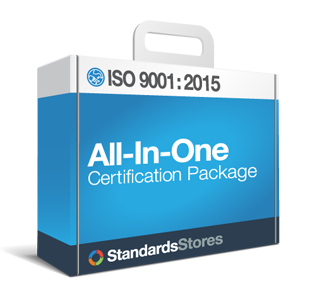ISO 9001:2015
Clause 0: Introduction
Learn More: The Seven Quality Principles
Clause 0 – Introduction
Clause 0.1: General
The intention of ISO 9001:2015 is to help organizations consistently meet customer requirements, enhance customer satisfaction, address risks and opportunities and meet business objectives. If done right, implementing an ISO 9001 QMS (Quality Management System) will result in many other benefits for your organization.
Clause 0.2: Quality Management Principles
The ISO 9001 standard is based on the following quality management principles:
- Customer focus
- Leadership
- Engagement of people
- Process approach
- Improvement
- Evidence-based decision making
- Relationship management
Clause 0.3: Process Approach
The process approach involves defining an organization’s processes; their interactions as well as required inputs and outputs. The purpose is to help manage these processes in a systematic way. Applying the PDCA (Plan-Do-Check-Act) cycle will help ensure these processes are delivering intended results and their performance is being continually improved. The ISO 9001:2015 clauses can be broken out into each of these cycle phases; plan (Planning), do (Support and Operation), check (Performance Evaluation) and act (Improvement).
One of the significant differences between ISO 9001:2008 and 9001:2015 is the replacement of preventative actions with risk management. It is within this section of the standard that risk-based thinking is first introduced. When planning for your QMS, you are to determine risks and opportunities that need to be addressed (ISO 9001:2015 clause 6.1.1) and what actions will be taken to address them (ISO 9001:2015 6.1.2).
Clause 0.4: Relationship with Other Management System Standards
The PDCA cycle and risk-based thinking are concepts used in other ISO standards. In an effort to better align ISO 9001 with other standards, these concepts have been adopted by ISO 9001:2015 as stated in section 0.3 above. In addition to these concepts, structure, content, and terminology have been modified from the 2008 version to make it easier for implementing multiple (or integrated) quality management systems such as ISO 14001 or AS9100.
The specific standards that relate to and are recommended to use in conjunction with ISO 9001 include ISO 9000 Quality management systems – Fundamentals and vocabulary and ISO 9004 Managing for the sustained success of an organization – A quality management approach.
Please note that certain text from the ISO 9001 standard is only used for instructional purposes. Standard Stores recognizes and respects the International Organization for Standardization (ISO) copyright and intellectual property guidelines.


